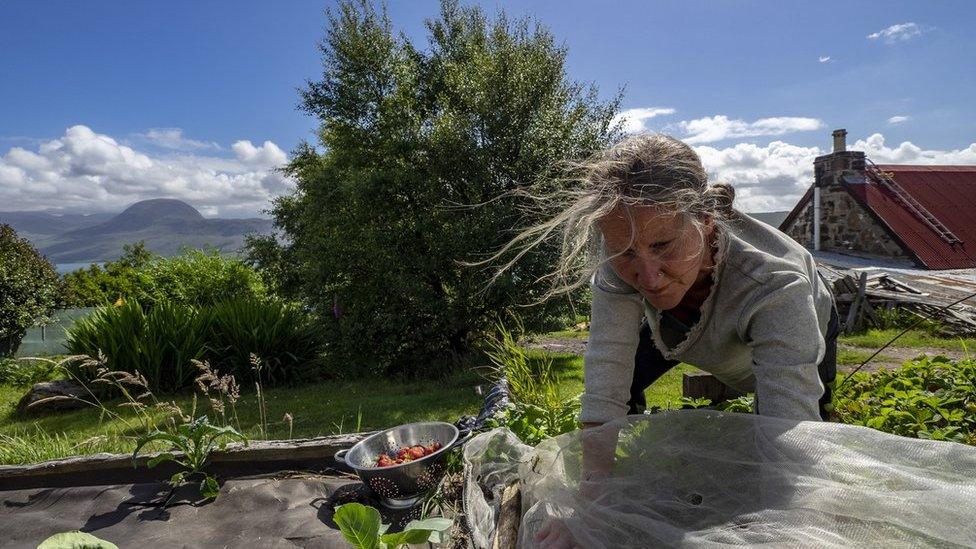Rationing energy is nothing new for off-grid community
- Published
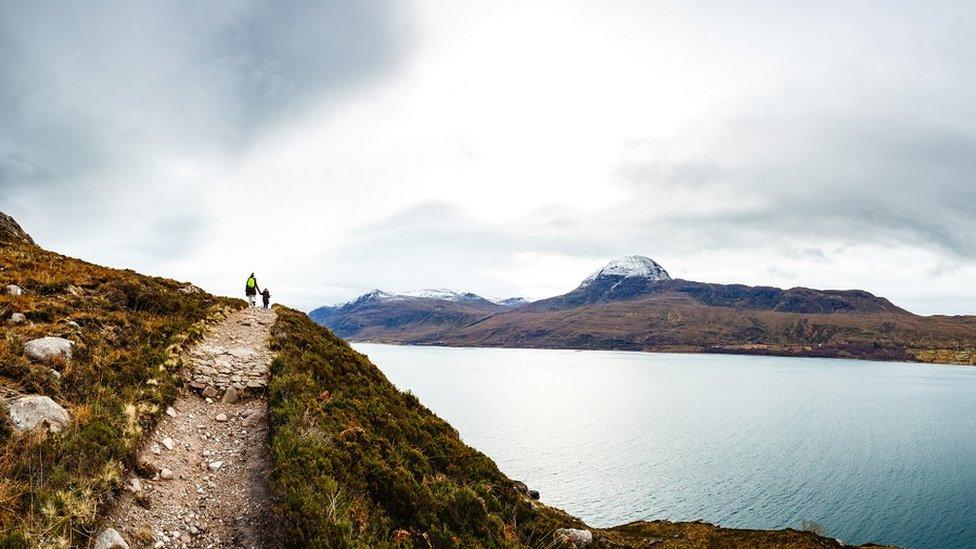
Getting to Scoraig involves either a five-mile walk or a trip by boat
People living in the remote off-grid community of Scoraig are used to making careful use of the wind and solar power that they generate.
The area can only be reached by a boat journey or a five-mile walk from the nearest road, and has no connection to mains electricity or gas.
The 70 residents produce their own wind and solar power, which can be topped up by diesel generators and using wood, oil and bottled gas for fuel.
Davy Forsyth, who was born and grew up in Scoraig, said residents were always mindful of the power they used.
"You never quite know when it's going to be windy or not, or if the sun is going to appear," he said.
"This morning I couldn't put the electric kettle on because there wasn't enough wind."
Davy said the area's energy supply was not consistent.
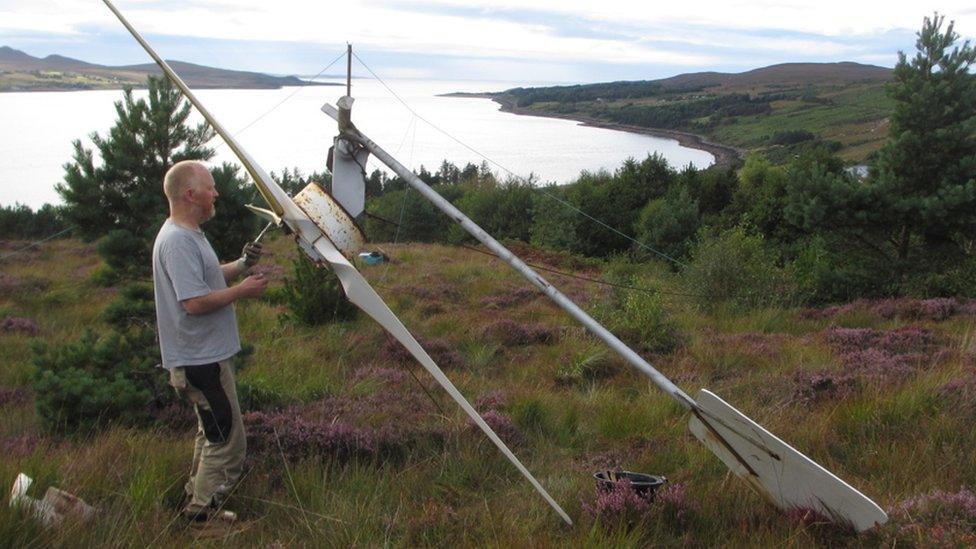
Davy Forsyth working on a DIY wind turbine at Scoraig
"We are always juggling," he told BBC Radio's Good Morning Scotland programme.
"It's interesting to think about people on the grid having to juggle and be frugal as we've always been like that."
Scoraig sits on a peninsula between Loch Broom and Little Loch Broom in Scotland's north-west Highlands.
People have lived there for centuries, although since the 1960s it has mostly been populated by those actively seeking an off-grid life.
It is among several Scottish communities with no connections to mains electricity or gas.
Many of the residents are involved in crofting and fishing, and there is a small school with a handful of pupils.
Almost every home in the community now has its own renewable scheme of varying size.
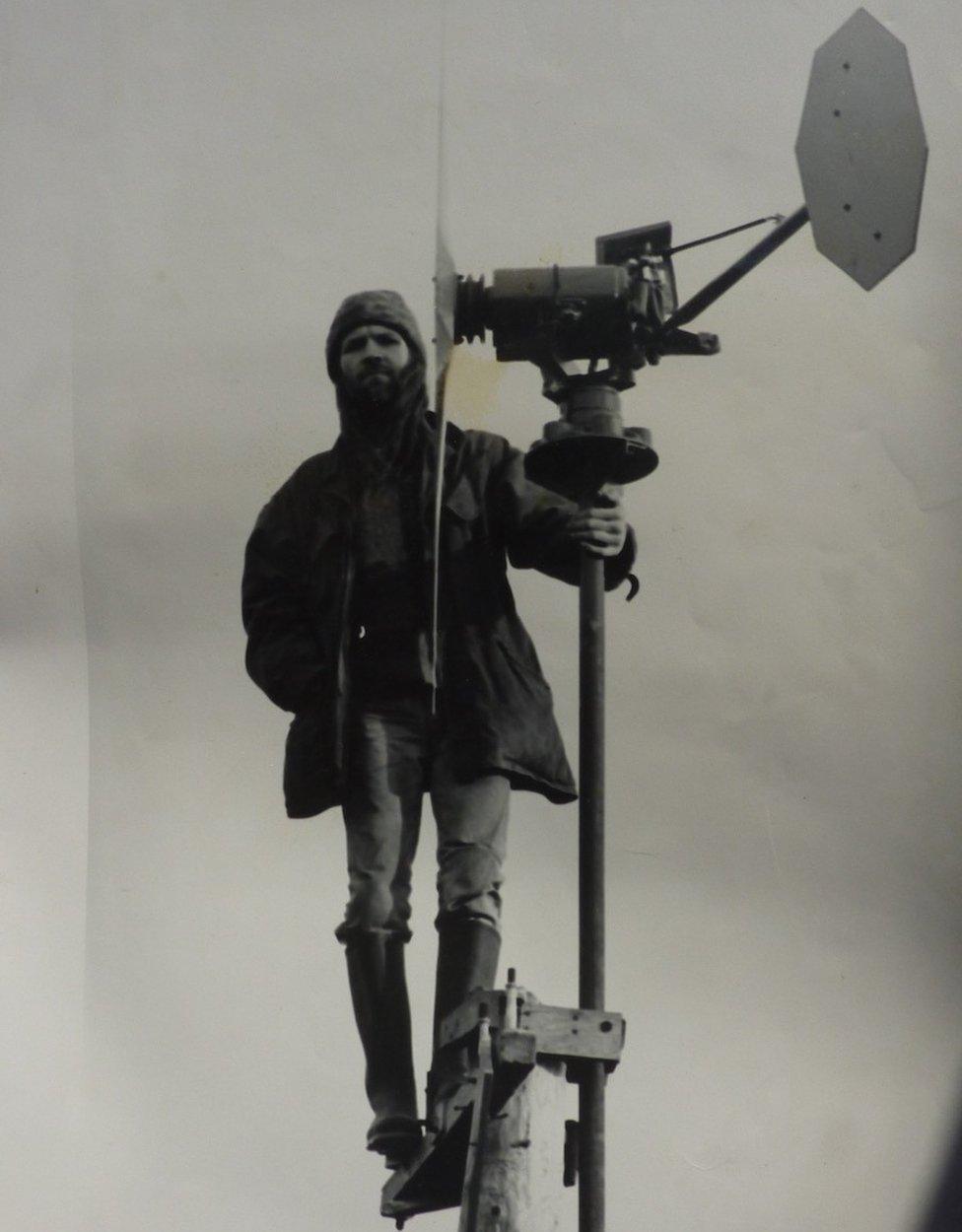
Hugh Piggott launched Scoraig Wind Electric in the 1970s with homemade turbines

Hugh Piggott pioneered wind power in the area in the 1970s, setting up Scoraig Wind Electric to harness the renewable energy.
The community's early wind scheme was built from scrap materials. Seven prototype turbines were made before the first small wind turbine was operational.
One of the big problems was finding a way to store the electricity generated from the homemade turbines.
Hugh said: "BT was modernising telephone exchanges at the time and we were able to buy high-quality storage batteries at scrap prices. That made a very big difference."
Over the years, the numbers of turbines grew to a dozen, and then to 30 machines.
He said that had been "very satisfying," but that Scoraig had no alternative to embracing renewable energy.

"Before these systems we used oil lamps. We cannot buy electricity," he explained.
"Running generators is ridiculously costly and unpleasant, so this is the only option really.
"Some systems are very low-budget, with ingenious use of second hand stuff, whereas others are higher-budget to save time and maximise efficiency.
"We do what we can to get what we need."
Hugh said there were times when a diesel or petrol generator might be needed to keep the power system going, but there were other times when power was abundant.
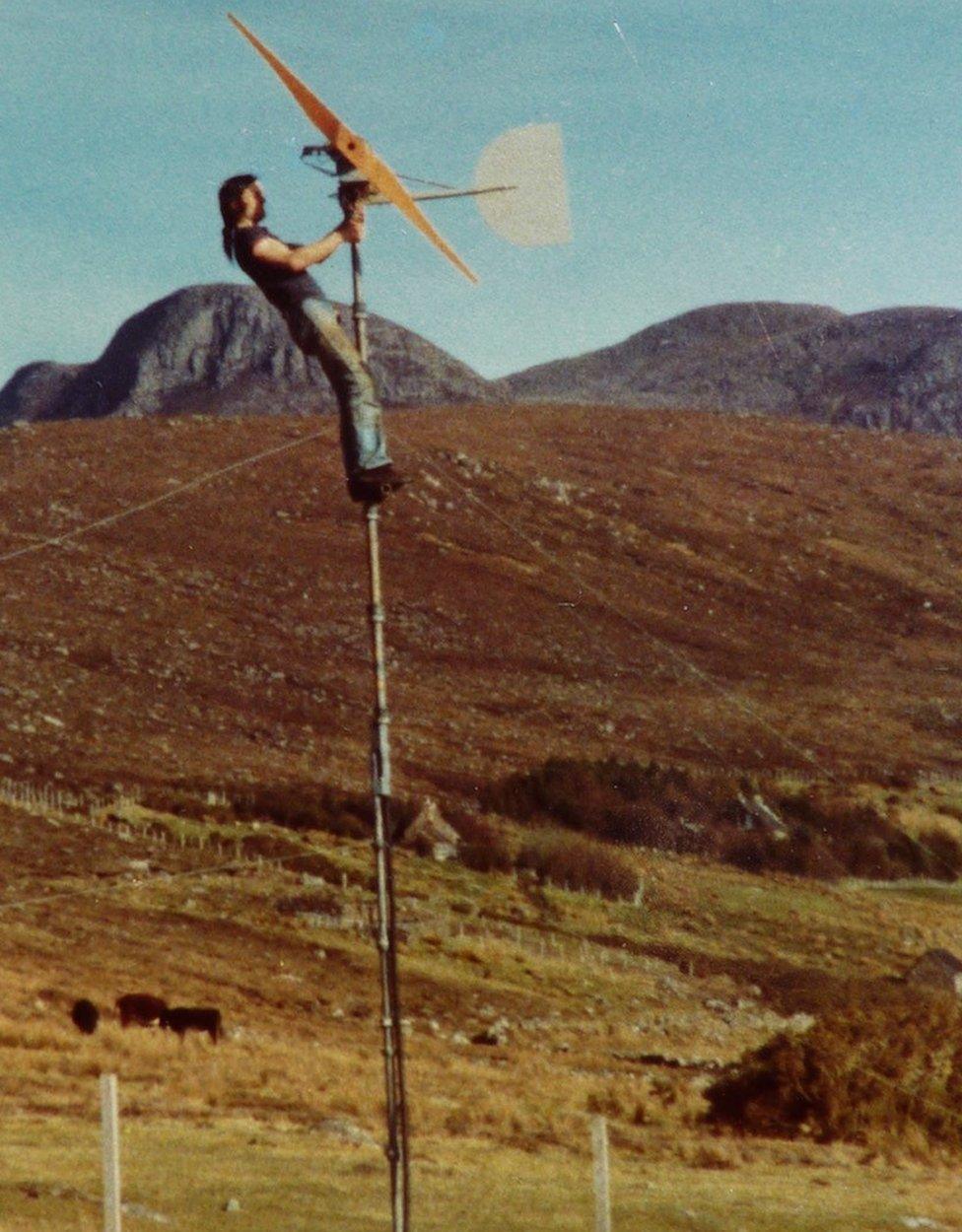
Hugh carries out maintenance to a turbine in the 1980s

When there is not enough wind, Davy Forsyth uses bottled gas for power - but he tries to use electricity whenever he can, partly due to increased costs of buying the gas.
"Most people have a generator, but tend to keep that to a minimum," he said.
Davy acknowledges that it would be difficult for urban communities to replicate the system that has been created in Scoraig.
"We have the land and the blasts that come in from the Atlantic for the wind energy," he said.
"It suits us well, but that's not transferrable to a city."
Related topics
- Published19 November 2018
